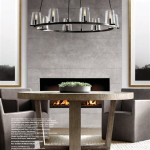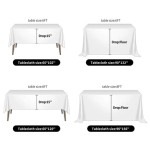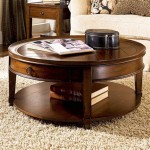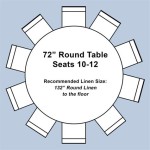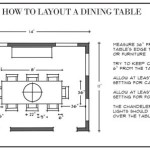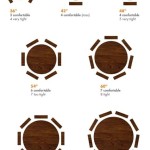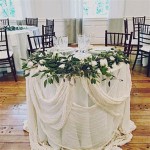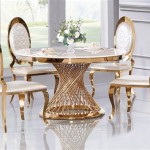Ideal Depth and Table for Round Diamond Size
The allure of a round brilliant diamond lies in its exceptional ability to refract light, creating the captivating sparkle and brilliance that it is known for. Achieving this brilliance is highly dependent on the precision of its cut, particularly the depth and table percentages. Understanding the ideal depth and table measurements for various round diamond sizes is crucial for selecting a stone that maximizes its optical performance and value.
The depth of a diamond refers to its height from the table (the top facet) to the culet (the pointed bottom). It is usually expressed as a percentage of the diamond's girdle diameter. The table of a diamond is the largest facet on the top of the stone, and it is also expressed as a percentage of the diamond's girdle diameter. The interaction between the depth and table is fundamental to a diamond's ability to reflect light internally and return it to the observer's eye. When these proportions are within specific ranges, the diamond exhibits optimal brilliance, fire, and scintillation.
Diamonds with depth and table percentages outside the recommended ranges may suffer from light leakage or obstruction. A diamond that is too deep can cause light to escape through the bottom (culet), resulting in a dull appearance. Conversely, a diamond that is too shallow may allow light to escape before it has a chance to be reflected back, leading to a loss of brilliance. Similarly, a table that is too large may block light from entering the diamond properly, while a table that is too small may not capture enough light for internal reflection.
The Importance of Depth and Table
The depth and table percentages, in conjunction with other cut parameters like crown angle and pavilion depth, significantly influence a diamond's light performance. A well-cut diamond acts like a series of tiny mirrors, reflecting light internally and dispersing it as a rainbow of colors (fire). When the depth and table are optimized, the diamond maximizes its ability to capture, reflect, and refract light, resulting in exceptional brilliance, fire, and scintillation. These visual properties are the primary determinants of a diamond's beauty and value.
A diamond's cut grade, assigned by gemological laboratories such as the Gemological Institute of America (GIA), takes into account depth, table, and other cut parameters to evaluate the overall quality of the cut. While cut grades provide a useful guideline, understanding the specific ranges of depth and table percentages considered ideal for different diamond sizes allows for a more nuanced evaluation and a better chance of selecting a diamond with superior light performance. It is important to note that cut grading standards can vary slightly between different grading laboratories.
Beyond the numerical values, the interplay between depth and table affects the overall visual appeal. A balanced combination of these proportions contributes to a pleasing aesthetic that enhances the diamond's beauty. Understanding how these proportions work together enables more informed decisions and helps prioritize diamonds with superior brilliance and fire.
Recommended Depth and Table Ranges by Diamond Size
The ideal depth and table percentages for a round brilliant diamond are not fixed values but rather ranges that vary slightly depending on the diamond's size. This variation is because the way light interacts with a diamond changes with its dimensions. Smaller diamonds may benefit from slightly different proportions than larger diamonds to achieve optimal light performance. The following are general guidelines for ideal depth and table percentages across common round diamond sizes. It's essential to consider these figures as starting points and to evaluate each diamond individually.
Diamonds under 0.50 Carat: For smaller diamonds in this size range, a slightly shallower depth and a smaller table are often preferred. This can enhance the diamond's brilliance, which might otherwise be less pronounced due to its smaller size. A depth percentage between 59% and 62% and a table percentage between 54% and 58% are generally considered to be within the ideal range.
Diamonds between 0.50 and 0.75 Carat: In this mid-size range, the ideal depth and table percentages are similar to those for smaller diamonds but can be slightly more flexible. A depth percentage between 60% and 62.5% and a table percentage between 55% and 59% usually result in optimal light performance.
Diamonds between 0.75 and 1.00 Carat: As the diamond size increases, the ideal ranges for depth and table become more defined. A depth percentage between 60.5% and 63% and a table percentage between 56% and 60% are generally recommended for diamonds in this size range. Deviations from these ranges may still produce excellent results, but careful evaluation is necessary.
Diamonds between 1.00 and 1.50 Carat: For diamonds in this larger size range, precision in the cut parameters becomes even more critical. A depth percentage between 61% and 63.5% and a table percentage between 57% and 60% are typically considered ideal. Diamonds with these proportions often exhibit exceptional brilliance and fire.
Diamonds over 1.50 Carat: Larger diamonds offer a greater canvas for light play, and slightly wider ranges for depth and table may still yield excellent results. A depth percentage between 61.5% and 64% and a table percentage between 57% and 61% can be acceptable, but it's crucial to assess the diamond's overall optical performance. Diamonds with proportions in the lower ends of these ranges may need careful evaluation to ensure the avoidance of light leakage or other undesirable effects. It's advisable to consult with a gemologist for the ideal assessment of larger stones.
It's essential to acknowledge that these are guidelines subject to nuances and individual preferences. The ultimate goal is to select a diamond that exhibits exceptional brilliance, fire, and scintillation, regardless of whether its depth and table percentages fall precisely within these ranges. Evaluating the diamond in natural light and using specialized tools like ideal-scopes or ASET scopes can help determine its light performance.
Beyond Depth and Table: Comprehensive Evaluation
While depth and table percentages are important indicators of a diamond's cut quality, they should not be the sole determinants in the selection process. A comprehensive evaluation should also consider other factors, such as the crown angle, pavilion depth, girdle thickness, culet size, and symmetry. These parameters collectively influence the diamond's overall light performance and visual appeal.
The crown angle, which is the angle formed by the crown facets and the table, plays a crucial role in dispersing light. A well-proportioned crown angle contributes to the diamond's fire. The pavilion depth, which is the depth of the pavilion facets, affects the light's reflection within the diamond. A pavilion that is too shallow or too deep can result in light leakage or poor brilliance.
The girdle, which is the outer edge of the diamond, should be neither too thin (risking chipping) nor too thick (adding unnecessary weight and obstructing light). The culet, which is the small facet at the bottom of the diamond, should ideally be absent or very small. A large culet can create a visible dark spot in the center of the diamond.
Symmetry refers to the precision of the diamond's shape and facet alignment. A diamond with excellent symmetry exhibits more even light reflection and scintillation. The GIA cut grade, for instance, takes these parameters into account, grading from Excellent to Poor. When interpreting cut grades, understanding the interplay of depth, table, and these other factors becomes vital.
Ultimately, the ideal depth and table proportions for a round brilliant diamond depend on a complex interplay of factors. While the guidelines provided offer a useful starting point, individual diamonds should be evaluated based on their overall optical performance and visual appeal. Consulting with a qualified gemologist can provide valuable insights and help ensure that you select a diamond that maximizes its brilliance, fire, and scintillation, showcasing its beauty to the fullest.

What Are The Ideal Proportions For Round Cut Diamonds Revealed

The Significance Of Diamond Depth And Table Percentages

Diamond Table And Depth Percentage Steven Stone

Expert Guide How To Calculate Diamond Depth Percentage

What Are The Perfect Diamond Proportions

The Ideal Proportions For A Princess Cut Diamond Jewelry Secrets

Diamond Anatomy Of A Round Draco Diamonds

Diamond Depth Percentages In Round Brilliant Cut Diamonds Findmyrock

The Diamond Table Jewelry Secrets

Diamond Anatomy Explained
Related Posts

